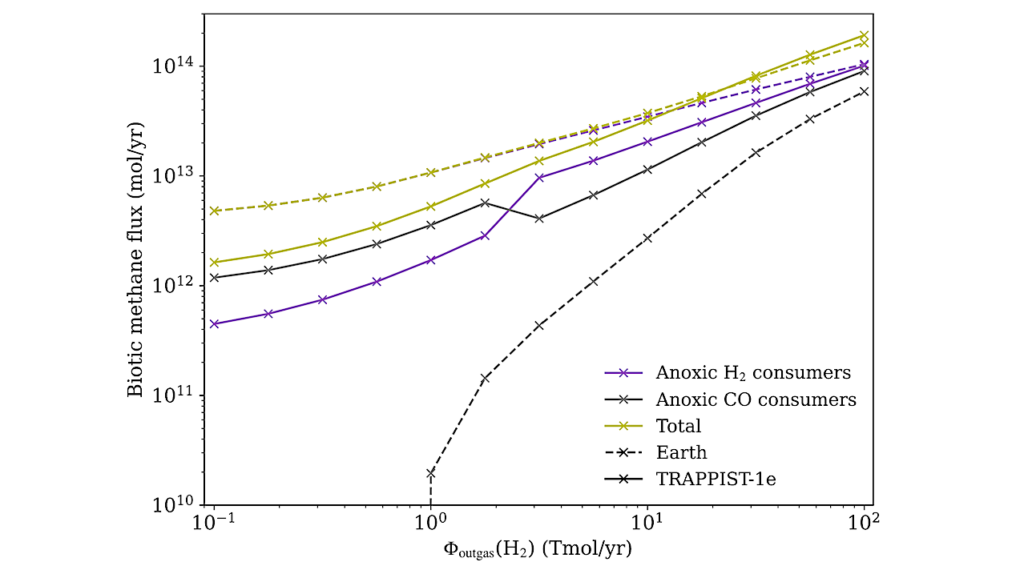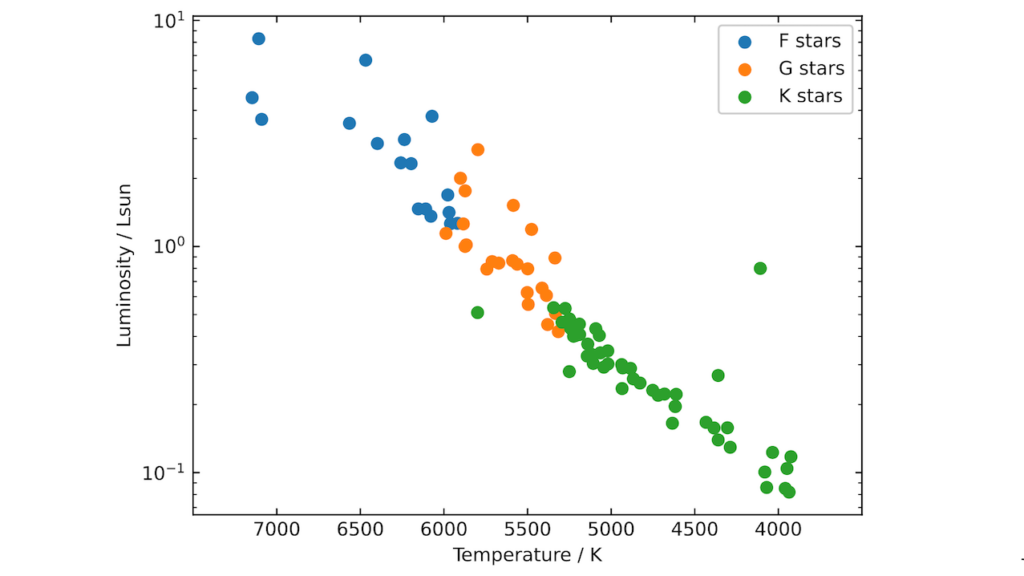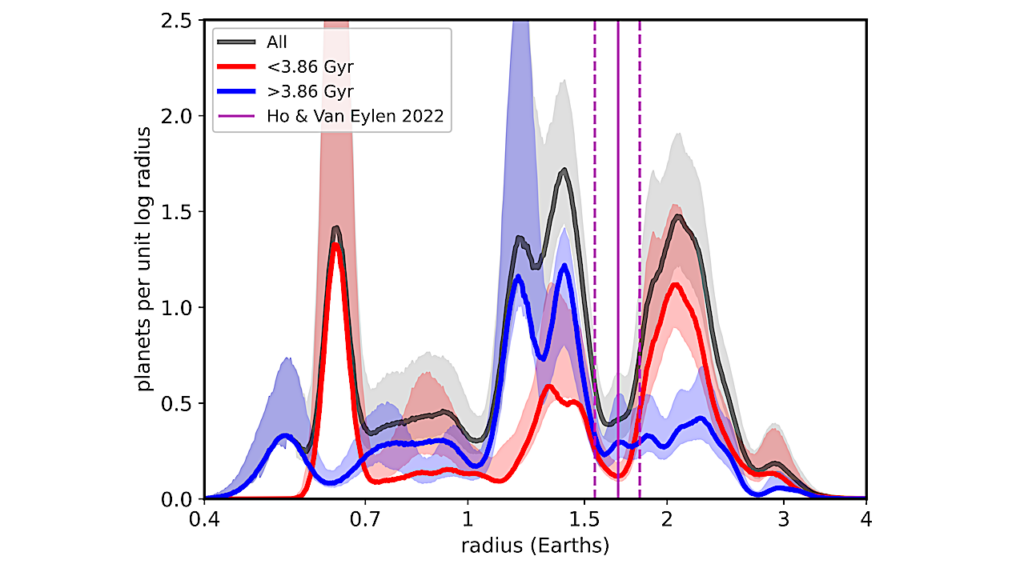Effects Of UV Stellar Spectral Uncertainty On The Chemistry Of Terrestrial Atmospheres

The upcoming deployment of JWST will dramatically advance our ability to characterize exoplanet atmospheres, both in terms of precision and sensitivity to smaller and cooler planets.
Disequilibrium chemical processes dominate these cooler atmospheres, requiring accurate photochemical modeling of such environments. The host star’s UV spectrum is a critical input to these models, but most exoplanet hosts lack UV observations. For cases in which the host UV spectrum is unavailable, a reconstructed or proxy spectrum will need to be used in its place. In this study, we use the MUSCLES catalog and UV line scaling relations to understand how well reconstructed host star spectra reproduce photochemically modeled atmospheres using real UV observations.
We focus on two cases; a modern Earth-like atmosphere and an Archean Earth-like atmosphere that forms copious hydrocarbon hazes. We find that modern Earth-like environments are well-reproduced with UV reconstructions, whereas hazy (Archean Earth) atmospheres suffer from changes at the observable level. Specifically, both the stellar UV emission lines and the UV continuum significantly influence the chemical state and haze production in our modeled Archean atmospheres, resulting in observable differences in their transmission spectra.
Our modeling results indicate that UV observations of individual exoplanet host stars are needed to accurately characterize and predict the transmission spectra of hazy terrestrial atmospheres. In the absence of UV data, reconstructed spectra that account for both UV emission lines and continuum are the next best option, albeit at the cost of modeling accuracy.
D. J. Teal, Eliza M.-R. Kempton, Sandra Bastelberger, Allison Youngblood, Giada Arney
Comments: 24 pages, 17 figures. Accepted by ApJ
Subjects: Earth and Planetary Astrophysics (astro-ph.EP); Solar and Stellar Astrophysics (astro-ph.SR)
Cite as: arXiv:2201.08805 [astro-ph.EP] (or arXiv:2201.08805v1 [astro-ph.EP] for this version)
Submission history
From: D Teal
[v1] Fri, 21 Jan 2022 18:08:11 UTC (9,770 KB)
https://arxiv.org/abs/2201.08805
Astrobiology








